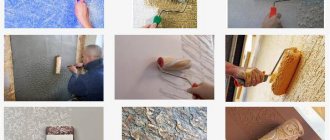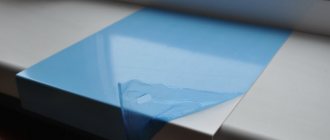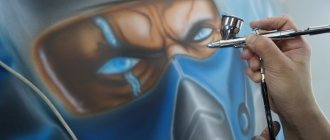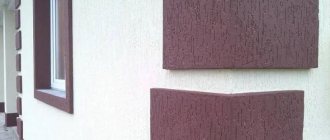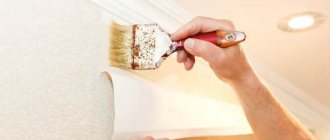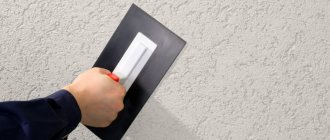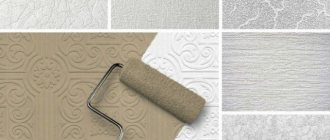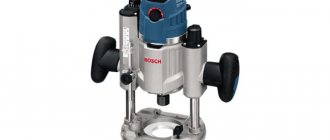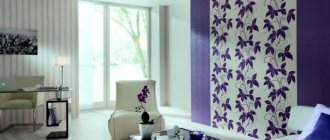No repair work in a house, apartment, cottage or other buildings can be completed without specialized tools. No high-quality priming, whitewashing or application of paints of various textures to the surface is possible without suitable devices in the form of special brushes. One of them is a paint brush. But for each type of work performed, its own specific model is needed. So, in order to understand the huge number of domestic and foreign products presented on consumer markets, it is recommended that you familiarize yourself with some of the features of this product.
Purpose and form
According to their intended purpose, paint brushes are divided into the following groups:
- whitewashing,
- paneling,
- flywheel,
- maklovitsa,
- trimming,
- handbrake,
- radiator,
- fan,
- edge,
- for varnish.
The whitewash brush has a rectangular shape, the width of which is 20 cm, the thickness is 4.5-6.5 cm. Such parameters ensure a quick whitewashing process, including large surfaces.
The panel version is used for painting difficult areas, as well as for designing contour lines and applying thin stripes. Such products are made only from natural bristles, fixed in a metal crimp base. Its shape is round, the diameter is no more than 1.8 cm.
The fly brush is quite massive, round in shape with a diameter of 6 - 6.5 cm, and the length of the hair bundle reaches 10 - 18 cm. Such tools are used for treating large surfaces. They can be used to paint, whitewash and prime walls and ceilings. These brushes are sold in stores, both assembled and disassembled. That is, it is formed into a bundle of the required thickness and connected to the handle.
Products such as poplars are used for painting walls or ceilings with water-based paints. The use of such a brush eliminates the possibility of subsequently processing surfaces with a flute. This type of paint brushes is available in round or rectangular shapes. The diameter of the first is 12 - 17 cm, and the width of the second can be in the range from 13.5 to 19.5 cm with a thickness of 5.5 to 6.5 cm. Professional craftsmen who often use this product recommend purchasing it with a universal handle , allowing you to work with the tool at different angles.
To give the wall a relief structure after painting, trim brushes are used. They are produced in a rectangular shape with dimensions of 15.4 x 7.6 cm.
Hand brushes are used to process window frames, doors or other small surfaces. They are a round or oval-shaped instrument, with a narrowed edge towards the end of the hair bun. Handbrake handles are made from natural raw materials, which ensures excessive softness. This promotes the formation of grooves on the surface to be painted. To avoid such phenomena, the brushes are shortened by tying them to the required length.
Radiator models got their name because of the ease of processing radiators of various modifications. This is achieved thanks to the narrow and flat shape of the main part with a curved handle, which is available in different lengths. This configuration of the tool allows for high-quality painting of hard-to-reach areas with uneven texture.
The name of the next model characterizes its appearance, which has the shape of a fan. This type of painting tools is used for applying wide, even stripes and contour lines.
Edge brushes are used to finish edges and edges. The advantage of their design is the ability to replace bristle blocks.
After painting surfaces, in many cases it is necessary to varnish. For this, special flat-shaped nail polish brushes with fluffy hair will be useful. This promotes a soft and delicate coating of the surface without affecting the already applied layer of paint.
Tips for choosing
When choosing a brush, you need to know that each of them has its own technical characteristics. Moreover, for each stage of work several types of tools may be needed.
In particular, a hand brush is better suited for painting the main surface, and a round synthetic filing brush is better for hard-to-reach areas of the house. Therefore, when choosing, you should first of all focus on what kind of work you are going to carry out.
When choosing a brush, you need to take into account the technical characteristics of the paint
In addition, it is recommended to pay attention to the material from which the handle is made. The wooden handle is lighter and cheaper. However, although the plastic handle is more expensive, it is durable and wear-resistant.
In addition, it can be quickly cleaned of paint. If you want to get a durable tool, then it is better to choose brushes with beam fixation using a brass element that does not corrode.
Material used
For each part included in the paint brush, a unique material with the necessary structure is used.
The handle is made of wood, plastic or metal. But for large instruments, metal raw materials are rarely used, since working with a heavy brush for a long time is very inconvenient and causes a lot of discomfort. Therefore, the maximum weight of this painting product should not exceed 0.5 kg.
For the crimp base, mainly lightweight materials with a thin-layer structure are used in order to avoid the above listed loads. The most common raw materials for these purposes are copper, steel or brass.
Also, the ink beam of a brush can have a different composition:
- stubble,
- hair,
- synthetic fiber.
Each of them contains both positive qualities and disadvantages. What does it mean?
The bristles used to make paint brushes are cut from the backbones of pigs of a certain breed. Its length can reach 8 cm, and it has good elasticity and excellent strength. Its advantages include a high degree of liquid absorption and its complete release during operation. In their color spectrum, bristle paint brushes are available in four variants, each of which corresponds to a specific method of use.
So:
- the yellow and black coloring of the hair tuft of the instrument indicates its use in extensive painting work;
- gray color indicates that the device belongs to the second grade, which means an increased level of rigidity;
- white tint is the fact that bristles are obtained by bleaching with a softer, but at the same time elastic texture.
Another distinctive positive property of brushes with natural bristles is their resistance to various abrasive chemicals. Therefore, this particular tool is used to work with oil or nitrocellulose components.
For more delicate surface finishing, natural pet hair is used, but its use is quite limited. In terms of hair stiffness, it is inferior to tools with bristles.
The most common raw material for paint brushes is synthetic fiber. It has similar qualities to the previous representatives, but are expressed to a lesser extent. Raw materials for their production:
- nylon,
- polyester,
- polyester.
Products made from the listed materials practically do not wear out and have an average level of elasticity and softness, and are resistant to mechanical damage. But, unlike natural raw materials, synthetic fibers are not able to absorb the liquid used during work well, therefore they are applicable in most cases with water-based paints.
To optimize the cost and quality of painting tools, modern manufacturers use a mixed type of hair bundle. This approach smoothes out the most dramatic differences in the properties of the product and makes it possible for them to be widely used.
Types of bristles
Natural fiber bristles are ideal for painting work; they hold the composition well, applying it in an even layer. It feels a little rough to the touch, which allows it to absorb more paint. This is what distinguishes it from artificial (nylon) hairs.
Bristles made of synthetic materials consist of polymers and have a small thickness. Different types of modern polymers allow you to achieve the desired rigidity. Nylon polyester bristles are perfect for water-intensive paints; their hairs do not absorb the paint material; nylon repels moisture and retains its original structure. In addition, nylon is better suited for painting timber without leaving lint on it.
USEFUL INFORMATION: Main types of primer for wall treatment
Mixed bristles are usually considered to be those that consist of natural and synthetic fibers (usually nylon). This approach improves the elasticity and wear resistance of the paint brush.
For finishing work
This category presents tools for narrow specific finishing works, which include paneling and fan products.
RemoColor 01-8-820
Russian manufacturers supply high-quality and natural products to consumer markets in the form of single copies or sets of filing brushes for finishing work. Their hair bundle is made of natural bristles and assembled using a high-quality metal crimp base into a 2 cm wide mold. A comfortable wooden handle provides comfortable conditions in the process of applying the dye to any surface. Natural bristles are able to fully absorb the dyeing substance and leave it on the treated surface with high quality.
Product parameters:
- thickness – 1.3 cm;
- width – 2 cm;
- length – 22.5 cm.
RemoColor 01-8-820
Advantages:
- convenient design;
- natural composition;
- high quality application.
Flaws:
- possibility of rapid wear;
- the price is above average.
Functional tasks of brushes
Most often, paint brushes are needed for household work. The brush is used in the following areas:
- covering with wallpaper glue;
- painting the surface of the floor, ceiling, walls;
- painting window frames and other structural elements;
- painting fences, benches in the garden;
- restoration of furniture that has lost its former appearance.
Are you planning to paint the walls in your apartment yourself? Check out the recommendations on how to do this correctly, as well as tips for updating the interior in the bedroom, hallway, dining room, living room, bathroom and toilet.
Proper care
Proper care of a painting tool is to prevent the paint or varnish from drying on the bristles. At the end of the work, it is thoroughly washed with water. If water-based paints were used, this will be sufficient. If the walls were painted with oil paint, you need to remove its remnants with white spirit. Then the instrument is washed again and thoroughly dried.

